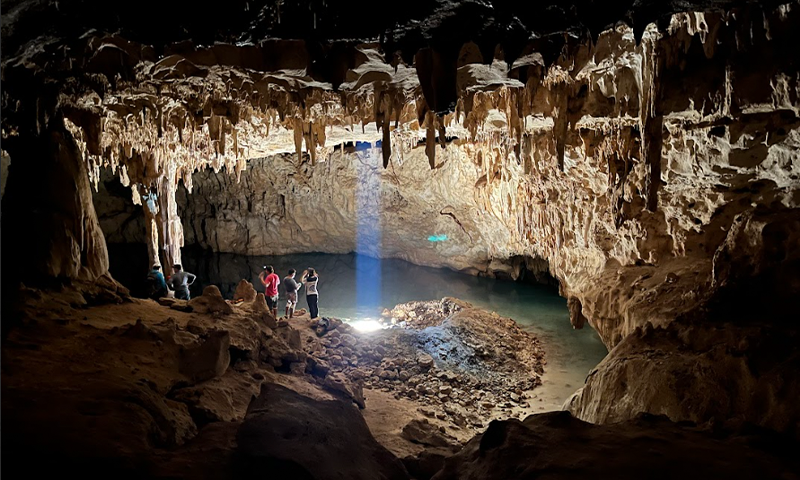Stalagmites Offer Clues to Maya Mystery
Chemical fingerprints point to reason for collapse
By Kristen French
August 14, 2025

Civilizations rise and fall. The Maya civilization once stretched over tens of thousands of miles in Central America, and during its golden age—known as the Classic Period, which lasted more than 600 years—it was admired for its grand limestone cities, advanced commerce, and its rich cultures of writing and art.
But the collection of linked city-states began to collapse at the end of the ninth century. For decades, historians and archaeologists have theorized that severe weather, and related famines, might have played a part. Now, scientists are finding confirmation in cave stalagmites, the ghostly rock spires that rise from the floor of some caverns due to the precipitation of calcium carbonate from the ceiling above. These stalagmites suggest that the empire’s undoing was indeed sown by a series of brutal droughts, including one that lasted 13 years.

END OF AN ERA: The authors Daniel H. James, David Hodell, Ola Kwiecien, and Sebastian Breitenbach, from left to right, at the Maya site of Labna in the Puuc region of Yucatán, Mexico, which was most likely abandoned during the Terminal Classic Period, when the Mayan civilization began unraveling. Credit: Mark Brenner, 2022.
“This period in Maya history has been a cause of fascination for centuries,” University of Cambridge paleoecologist Daniel H. James said in a statement. “There have been multiple theories as to what caused the collapse, such as changing trade routes, war, or severe drought, based on the archaeological evidence the Maya left behind,” said James, who conducted the research while a Ph.D. student at Cambridge’s Department of Earth Sciences.
More:
https://nautil.us/stalagmites-offer-clues-to-mayan-mystery-1231205/

